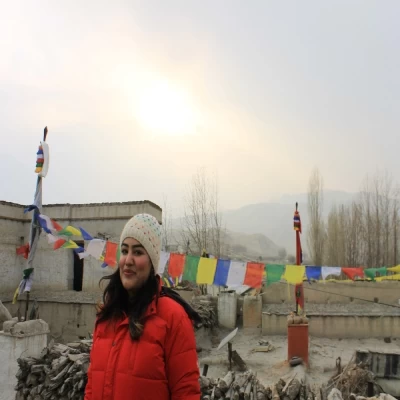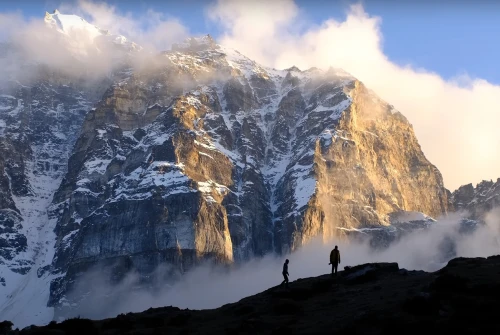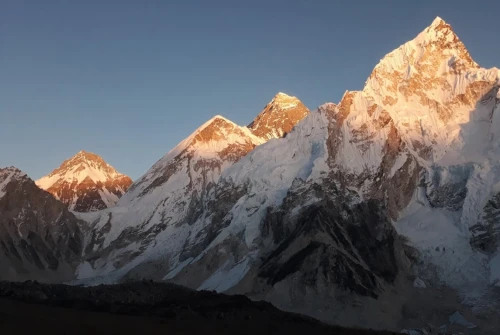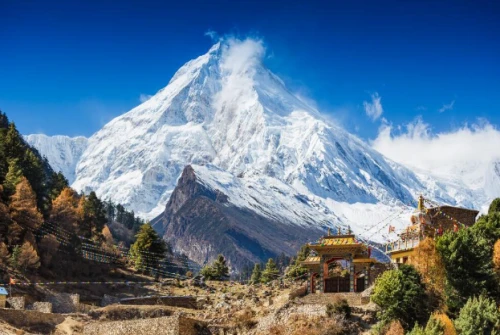The Kanchenjunga Base Camp Trek is a rare gem in Himalayan adventures. Nestled in Nepal’s far east, it offers a pristine and remote trekking experience, far from the crowded trails of Everest or Annapurna. This trail takes you through lush forests, rugged alpine terrain, traditional villages, and up close to the world’s third-highest peak—Mount Kanchenjunga (8,586 meters).
Unlike other popular Himalayan treks, Kanchenjunga is relatively untouched, providing a more authentic and wilderness-oriented journey. Expect minimal infrastructure, fewer tourists, and a deeper connection with nature and culture. But, with its challenges come rewards—glacier views, rare wildlife, and the chance to walk where few have tread.
Understanding the Kanchenjunga Base Camp Trek
Here is a list of things you need to know before heading to the Kanchemjumga Trek.
Where Is Kanchenjunga Base Camp?
Located in Nepal’s Taplejung district near the Indian border, Kanchenjunga offers two base camps, North (Pangpema) and South (Oktang). Some trekkers complete a circuit covering both camps, while others choose one.
East vs North Base Camp: Which One to Choose?
- North Base Camp (Pangpema): Offers spectacular views of the north face of Kanchenjunga.
- South Base Camp (Oktang): Brings you closer to Yalung Glacier and the dramatic south face.
Permits and Regulations
As the trek lies in a restricted region, you’ll need:
- Restricted Area Permit (RAP)
- Kanchenjunga Conservation Area Permit (KCAP)
- A registered guide and at least two trekkers in your group
Best Time to Trek to Kanchenjunga Base Camp
- Spring (March–May): Blooming rhododendrons, clear mornings
- Autumn (September–November): Crisp weather, stable skies, post-monsoon freshness
You can also read Best Time for Kanchenjunga Trek: When to Go?
Off-Season Trekking Considerations
While it is possible, trekking in winter or monsoon brings risks like landslides, snow-blocked trails, and poor visibility. Not recommended for beginners.
Physical Preparation and Fitness
This trek spans 18–25 days and climbs over 5,000 meters, requiring good cardiovascular and muscular endurance.
Best Training Routines for High-Altitude Treks
- Cardio Workouts: Hiking with weight, running, cycling
- Strength Training: Focus on legs and core
- Acclimatization Practice: If possible, train at higher elevations
Mental Preparation for Remote Wilderness
You'll be trekking in isolation for days, so mental toughness and adaptability are key. Prepare for:
- No mobile signal
- Basic facilities
- Unpredictable weather
Travel and Logistics
Getting to the Trailhead: Flights and Roads
You’ll first need to reach Taplejung, the trek’s starting point.
Flight Option: Kathmandu → Bhadrapur (1 hour) → drive to Taplejung (7–10 hours)
Land Option: Long and bumpy bus rides—discouraged for comfort
Understanding Local Transportation
Expect:
- Limited public buses
- Private jeeps (expensive but efficient)
- Weather-related delays in flights and road travel
Accommodation and Food
Tea Houses vs Camping Options
In recent years, more basic tea houses have opened. However, in upper sections, camping might be required.
Typical Meals on the Trek
- Dal Bhat (Lentils and Rice)
- Momos (dumplings)
- Fried noodles or pasta
- Tibetan bread with honey or jam
- Hot lemon, ginger tea, or instant coffee
Avoid raw veggies and unboiled water.
Health and Safety Tips
Managing Altitude Sickness
The trail exceeds 5,000m at Pangpema, so be vigilant.
Preventive Measures:
- Ascend slowly
- Rest days are non-negotiable
- Hydrate frequently
- Use Diamox if advised
Symptoms to Watch:
- Headaches, nausea
- Dizziness, breathlessness
- Confusion or fainting (seek emergency help)
First Aid and Emergency Plans
Carry a well-stocked first aid kit:
- Rehydration salts
- Bandages, antiseptic
- Painkillers
- Blister treatment
Always have a satellite phone or GPS locator beacon.
Trekking Insurance Essentials
You must get insurance that covers:
- High-altitude trekking (up to 6,000m)
- Emergency evacuation by helicopter
- Medical treatment in Nepal
- Trekkers often use providers like World Nomads or SafetyWing.
Budgeting for the Kanchenjunga Base Camp Trek
Average Trek Cost Breakdown
Item | Cost (USD) |
Permits | $30–$50 |
Guide (per day) | $25–$35 |
Food & Lodging (per day) | $25–$40 |
Flights & Transfers | $150–$250 |
Gear (rent/buy) | $100–$300 |
Total (for 20–25 days): Around $1,500–$2,000
Hidden Costs You Shouldn't Ignore
- Tips for guides and porters
- Hot showers or charging fees in tea houses
- Unexpected route changes or delays
- Emergency evacuations (if uninsured)
Cultural Etiquette and Responsible Tourism
Local Customs and Dress Code
- Dress modestly (cover shoulders and legs)
- Remove shoes before entering homes or monasteries
- Always ask before taking photos of locals
How to Be a Respectful Trekker
- Greet locals with “Namaste”
- Avoid public displays of affection
- Support local businesses and avoid plastic
Photography and Scenery Highlights
Best Photo Spots Along the Route
- Sele La Pass – panoramic Himalayan views
- Pangpema – up-close Kanchenjunga face
- Ramche Valley – a dramatic alpine basin
- Ghunsa Village – traditional Tibetan-style houses
Capturing Sunrise Over Kanchenjunga
Wake early in Oktang or Pangpema for breathtaking views of the first light hitting the peak—carry a tripod for sharp shots in low light.
Environmental Concerns and Sustainable Trekking
Leave No Trace Principles
- Carry out all trash
- Use biodegradable soapAvoid campfires—use gas stoves
- Stay on designated trails
Supporting Local Communities
- Hire local guides and porters
- Stay in family-run tea houses
- Purchase souvenirs directly from artisans
Conclusion
Preparing for the Kanchenjunga Base Camp Trek demands both physical readiness and logistical planning. It's not just another trek—it's an immersion into one of the world’s last untouched trekking routes. With the right gear, guidance, and mindset, you’ll not only survive this journey but cherish it for a lifetime.




